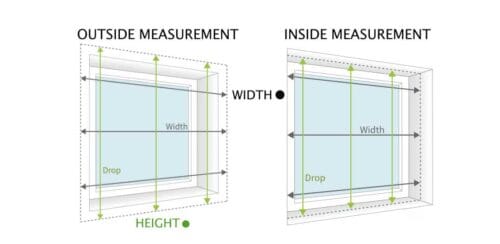在建造新房或计划更换窗户时,标准窗户尺寸是做出经济实惠选择的关键因素。它们体现了房屋的特色,提升了房屋的吸引力,并影响着每个房间的氛围。
在本指南中,Grandsea 将向您介绍最常见的窗户尺寸,并分享有用的技巧,让您能够无缝地选择完美的窗户和门。
标准窗户尺寸是多少?
平开窗或铰链窗:这些窗户是经典的铰链式窗户,简洁、优雅。虽然具体尺寸可能有所不同,但您通常会在以下地方找到单层平开窗:
- 60–70 厘米宽 x 120 厘米高
- 70 x 140厘米
对于您想要营造氛围并让空气流通的空间来说,它们是完美的选择。
单悬窗和双悬窗尺寸:如果您想要更传统的设计,并希望获得更好的通风效果,双悬窗是一个不错的选择。它们通常也有更广泛的尺寸可供选择。一些标准尺寸包括:
- 35至47英寸宽
- 常用尺寸包括 110×150cm、120×130cm 或 120×140cm
它们几乎适用于任何房间——从卧室到起居区。
法式门和法式窗尺寸:想要开阔空间,引入更多光线?法式门和法式窗正是实现这一目标的绝佳选择。它们尤其适合用于露台或阳台。标准尺寸通常如下:
- 单扇法式门:90 厘米 x 255 厘米
- 双开法式门:120厘米 x 245厘米
这些给您的家增添了一种精致的感觉和更多的户外感觉。
窗口宽度
就窗户宽度而言,标准窗户的宽度通常在600 毫米到 1200 毫米之间。同样,宽度取决于房间的具体需求以及所需的自然光量。不仅要考虑窗户的尺寸,还要考虑美观度:宽大的窗户可以营造更令人愉悦的美感。
窗口高度
标准窗户高度通常在900 毫米至 1200 毫米之间。最终高度可根据您的设计偏好或当地建筑规范进行调整。请注意,不同窗户品牌可能会提供不同标准尺寸。
影响标准窗口尺寸的其他因素
我应该安装多大尺寸的窗户?您可以在各品牌窗户的产品目录中找到不同开启和关闭类型的窗户。最常见的选择是平开窗、滑动窗和内开内倒窗。平开窗是传统的窗户类型,可以向内或向外开启。而内倒内倒窗的特点是向外开启,铰链位于窗户的上部。这种窗户尤其适用于室外空间有限的区域;
窗户尺寸的选择是规划翻新或新建房屋时最关键的环节之一,因为它直接影响房间的自然采光量。选择隔热隔音效果优异的窗户也同样重要。
一般来说,现代建筑的窗户高度最好为120-140厘米。还要注意的是,在某些地区,法律规定必须至少遵守最低窗户高度,窗框必须距离地面至少1米。

选择窗口大小的提示
隔热隔音: 现代窗户拥有卓越的隔热性能。选择高性能玻璃,例如 Low-E 玻璃,可实现卓越的气候控制和隔音效果。
风格与美感: 确保窗户的尺寸和外观与您家的建筑风格相符。纤细的黑色窗框是现代风格的流行趋势。
当地法规: 请务必检查当地建筑规范,了解任何规定最小窗户尺寸或安装要求的规定。
使用标准窗口尺寸有用吗?
是的,标准窗户尺寸为门窗制造商和安装商提供了便利,制造商可以更高效地生产窗户,安装商可以更快地完成窗户安装。对于消费者来说,这也有明显的好处:无论您选择哪种材料,您都可以在更短的时间内以更低的成本比较不同门窗公司的报价,从而获得理想的门窗。
您还可以联系门窗制造商并要求定制窗户和法式门的尺寸(需付费)。
非标准开口在老房子、高天花板的建筑或阁楼等天花板不规则的特殊空间中很常见。对于这些情况,我们强烈建议您咨询专业人士以获得准确的测量结果。或者,您也可以信赖 Grandsea 门窗公司的专家。我们的团队将耐心提供专业的测量建议——只需点击一下即可联系我们。
为了长期受益,建议选择优质型材。在我们的产品目录中,您可以找到各种尺寸的高强度铝框窗,其中一些在隔热和隔音方面表现出色。
如何测量窗口大小?

无论您是更换窗户还是安装全新窗户,获得正确的尺寸都至关重要。完美贴合的窗户意味着更好的隔热效果、更便捷的安装过程以及更少的未来问题。
别担心——其实比你想象的要简单。这里有一份简单的分步指南,教你如何正确操作。
所需材料:你只需要一把卷尺和一支铅笔(或许还可以加一个记事本)就能完成这个项目。测量前,请务必清理窗户开口,以便清晰地看到所有边缘和框架细节。
步骤 1:测量高度 首先测量窗户的高度。将卷尺垂直放置在窗台上,直至开口顶部(也就是过梁)。保持卷尺笔直,确保其紧贴窗框,以获得最准确的测量结果。记下测量结果。
步骤2:测量宽度 接下来,测量窗框一端到另一端的宽度。从窗框左上角开始,将卷尺垂直拉至窗框内侧右上角。所有位于窗框内部且在侧面可见的窗框部件也应包括在内。完成此步骤后,记下宽度。
为了更精确,请再次测量宽度——这次要穿过窗户开口的中心。窗框会随着时间的推移自然下垂一点,因此第二次测量可以作为交叉检查,以捕捉任何不平整的区域。
步骤3:测量窗扇(如有)如果您要拆除窗扇(或面板),请务必测量它们。测量每个窗扇的高度和宽度,尤其是在有多个窗扇的情况下。不要想当然地认为它们都一样。
现在怎么办?
测量好尺寸后,就可以开始选购了。如果您的尺寸与标准尺寸相近,那么恭喜您,您可以购买现成的替换件。否则,您可以联系门窗供应商,例如 Grandsea,他们可以为您提供完美的定制解决方案。
从一开始就获得正确的测量结果,可以为您节省大量时间、金钱,并避免安装过程中的挫败感。花些时间仔细测量,您就能获得完美契合的安装效果。
窗口尺寸:窗口的最小尺寸是多少?
窗户的尺寸会因房屋的建筑风格和个人喜好而有很大差异,但有一些基本准则可以帮助您做出选择。最终,您的窗户应该能够提供充足的自然光线、良好的空气流通,理想情况下还能提供宜人的视野,同时还能与房间的室内设计相得益彰。窗户的最小尺寸是多少?只需遵循这个简单的经验法则:窗户宽度应不小于房间地板面积的十分之一。
这意味着,对于一个20平方米的房间,窗户玻璃的总面积至少应为2平方米。这确保了房间获得充足的光线和通风,并在需要时可以作为可行的紧急出口。
大多数人在询问窗户高度时都会遵循一个经验法则:窗户高度至少应为天花板高度的十分之一。例如,如果屋顶高度为三米,窗户高度至少应为0.3米。这样,您才能欣赏到宜人的户外景色,并让充足的自然光线进入房间。
一般来说,窗户顶部应位于距天花板高度至少10%的位置。对于3米高的天花板,窗户应至少位于距天花板线0.3米(30厘米)的位置。这样的位置可以提供宜人的视野,并有效地分配自然光线。
除了最小尺寸外,窗户的形状也很重要。传统的平开窗是常见的选择,但我们也可以选择折叠窗、内倒窗或推拉窗。窗户形状的选择取决于我们的品味和建筑的美观度。
关于标准窗口尺寸的结论
窗户的尺寸取决于多种因素,并可能根据您的个人喜好而有所不同。重要的是要考虑房屋的建筑风格、所需的自然采光、通风需求以及周围环境的影响,例如临街的隔音窗户。此外,还要考虑窗户材料的类型,因为它会影响进入房屋的自然光的大小和数量。



